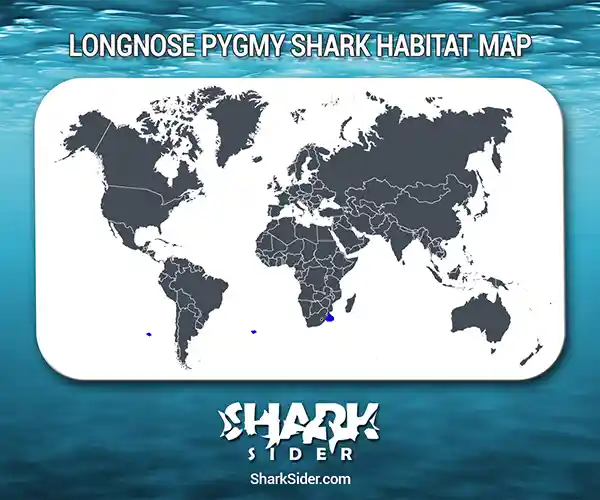The longnose pygmy shark is a rare species of kitefin shark, with the most information about it coming from a handful of collected specimens.
Longnose Pygmy Shark Scientific Classification |
|
| Kingdom | Animalia |
| Phylum | Chordata |
| Class | Chondrichthyes |
| Order | Squaliformes |
| Family | Dalatiidae |
| Genus | Heteroscymnoides |
| Scientific Name | H. marleyi |
Description
At most, the longnose pygmy shark can reach a length of 15 inches. The body is slender, compressed on both sides, and has large eyes. Its bulbous snout makes up half the length of the shark’s head and ends in a tip. The nostrils have skin flaps covering them, and the mouth is transverse, with smooth, thin lips. Inside the mouth are 22 rows of tiny teeth in the upper jaw and 23 rows of larger, broader, and knife-like teeth in the lower jaw, which interlock to form a cutting surface.
The second dorsal fin is larger than the first, while the pectoral fins are short and look like paddles. The broad caudal fin has a well-developed lower lobe and an upper lobe with a deep ventral notch near the tip.
Dorsally this shark is dark brown with light black-ish bands near the fin edges. Ventrally these sharks have light-emitting photophores.
Where do they live
Map Of The Longnose Pygmy Shark’s Habitat

Longnose pygmy sharks have a sporadic distribution, with sightings in the western Indian Ocean close to the eastern KwaZulu-Natal, the southeastern Atlantic close to the Walvis Ridge, and the southwestern Pacific Ocean off Chile.
Its depth range is 1647 ft, and it has been spotted close to the surface, indicating it lives on the open ocean.
Behavior
Hunting
Its diet consists of fish found in open waters as well as invertebrates.
Reproductive
This shark is viviparous, giving live birth to a small litter of pups.
Males become sexually mature at 13 inches, and females do so at 14 inches.
Interactions with humans
As very little remains known about this species, with only six specimens uncovered to date, the IUCN has classified it as “Least Concern” or “LC”. This is probably due to its presence in three of the big oceans.
